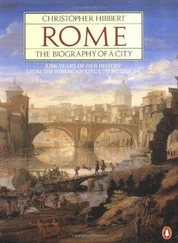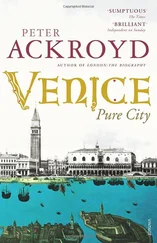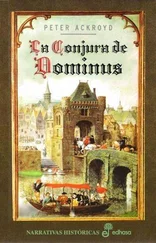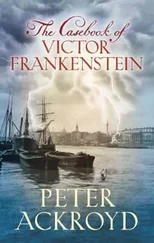Peter Ackroyd - London - The Biography
Здесь есть возможность читать онлайн «Peter Ackroyd - London - The Biography» весь текст электронной книги совершенно бесплатно (целиком полную версию без сокращений). В некоторых случаях можно слушать аудио, скачать через торрент в формате fb2 и присутствует краткое содержание. Год выпуска: 2000, ISBN: 2000, Жанр: Биографии и Мемуары, на английском языке. Описание произведения, (предисловие) а так же отзывы посетителей доступны на портале библиотеки ЛибКат.
- Название:London: The Biography
- Автор:
- Жанр:
- Год:2000
- ISBN:9781400075515
- Рейтинг книги:5 / 5. Голосов: 1
-
Избранное:Добавить в избранное
- Отзывы:
-
Ваша оценка:
- 100
- 1
- 2
- 3
- 4
- 5
London: The Biography: краткое содержание, описание и аннотация
Предлагаем к чтению аннотацию, описание, краткое содержание или предисловие (зависит от того, что написал сам автор книги «London: The Biography»). Если вы не нашли необходимую информацию о книге — напишите в комментариях, мы постараемся отыскать её.
London: The Biography — читать онлайн бесплатно полную книгу (весь текст) целиком
Ниже представлен текст книги, разбитый по страницам. Система сохранения места последней прочитанной страницы, позволяет с удобством читать онлайн бесплатно книгу «London: The Biography», без необходимости каждый раз заново искать на чём Вы остановились. Поставьте закладку, и сможете в любой момент перейти на страницу, на которой закончили чтение.
Интервал:
Закладка:
Then, in 883, Alfred engaged in some form of siege, mustering an English army outside the walls of the city. London was the great prize, and three years later Alfred obtained it. It was, in fact, in the city itself that his sovereignty over the whole region was formally advertised, when “all the English people that were not under subjection to the Danes submitted to him.” London was still the emblem of power, in other words, even after its occupation by the Norsemen. The Danes sued for peace and were allocated territory to the east of the River Lea. London became a frontier town, therefore, and Alfred initiated a scheme of resettlement and fortification. The walls were restored, the quays rebuilt, and all the activities of Lundenwic brought within the defences of the revived city; it is at this point that Lundenwic passes into history as Aldwych, or “old market-town.”
London had once more become new, since Alfred instituted a scheme of works which might qualify as an early attempt at city planning. He built a road, just within the walls, from Aldgate to Ludgate; the outline of it still exists in the streets of the modern City. The alignments of new streets were plotted close to the wharves of Queenhithe and Billingsgate. He re-established London and rendered it habitable.
Certainly the city was powerful and formidable enough to withstand Viking assaults in succeeding years; the burgwara , or citizens, even marched out against them in 893 and 895. On that later occasion Londoners sallied forth to destroy or plunder the enemy ships. The fact that the Vikings were unable to retaliate against London suggests the effectiveness of its defences.
The restoration of London’s life and power might not have been all of Alfred’s doing, although his native genius as a planner of cities suggests that he played a prominent role. He had given lordship of London to his son-in-law, Ethelred, and had granted lands within the walls to religious and secular magnates. There then grew up that curious division or subdivision of land which is manifest today in the various wards and parishes of the City. An area of London ground might have been defined by streams, or by the course of Roman remains, but once apportioned to an English lord or bishop it became his especial soke or territory. Churches, of wood or of limestone and sandstone, were erected to bless and protect each well-defined area of London’s earth; these sacred edifices in turn became the focal point for small communities of tradesmen, artificers and others.
The early tenth century was a period of peace, although the citizen army of London assisted Alfred in his efforts to free those British regions still held under the Danelaw. The historical records describe only the succession of Mercian kings to the overlordship of London. In 961 there was a great fire, succeeded by an outbreak of plague fever; the cathedral church of St. Paul’s was destroyed in the conflagration, and once more we witness the periodic fate and fatality of the city. There was another great fire twenty-one years later, and in the same year three Viking ships attacked the coast of Dorset. The succeeding years were marked by a series of Viking attacks upon the prosperous city; no doubt the London Mint, with its reserves of silver, was a particular attraction. But the defences, restored by Alfred, were strong enough to withstand a number of incursions; in 994 the Danes sent a force of ninety-five ships into the Thames in order to blockade and assault the city, but they were driven back by London’s army. According to the Anglo-Saxon Chronicle these citizens visited upon the Danes “more slaughter and harm than they ever supposed that townsmen could inflict.” It is important to recognise, in the course of these battles and sieges, that London itself had acquired its own army and therefore a measure of independent power; it possessed the characteristics of a kingdom or a sovereign state which, for many centuries, it never wholly lost.
So the soldiers of London continually resisted the Danes, and there are records of them seizing the alien ships and rowing them back to the city. They marched to Oxford to assist their countrymen and, although the Viking raids occasionally swept within the vicinity of their walls, the city stood firm. Indeed London still maintained its position as a flourishing port, and in 1001 an Icelandic poet recorded his impressions of the quayside where merchants from Rouen, Flanders, Normandy, Liège and other regions paid a fixed toll upon their goods; they brought in wool, and cloth, and planks, and fish, and melted fat; a small ship paid a toll of one halfpenny, and in turn the mariners bought pigs and sheep for their journey homewards.
In 1013 the Danish leader, Sweyn, commanded a full invasion force of Scandinavian warriors and marched upon London “because therein was King Aethelred.” The “citizens would not yield,” according to the Anglo-Saxon Chronicle , “but resisted with full battle.” It was not enough, however, and after a long siege they surrendered their city to the Danes. The reigning monarch fled but in the following year he returned with a most unlikely ally, Olaf of Norway. Olaf’s Norsemen manoeuvred their ships close to London Bridge, tied them to its wooden piles with ropes and cables, then, assisted by the tide, strained at the wooden supports until they were dislodged and the bridge itself fell into the Thames: a notorious episode in the history of that great thoroughfare. In recent years iron axes and swords have been found at this point in the river. An Icelandic saga suggests that “the citizens, seeing their river occupied by the enemy’s navy so as to cut off all intercourse that way with the interior provinces, were seized with fear.” Since they were being relieved of a temporary and alien king this is perhaps open to debate, but the loss of the bridge was indeed a serious impediment to commerce and communications. Yet the saga ends happily, or at least with an encomium-“And thou hast overthrown their bridges, oh! thou storm of the sons of Odin! skilful and foremost in the battle. For thee it was happily reserved to possess the land of London’s winding city.” Olaf himself was eventually beatified, and in London were erected six churches to venerate his memory, one by the southeastern corner of the bridge which he had once destroyed. St. Olave in Hart Street, where Samuel Pepys worshipped, still stands.
During the next three years the English and the Norse were engaged in a series of sieges and battles and assaults; in this protracted warfare London remained the single most important site of power and authority. After the death of Aethelred in 1016, “all the councillors who were in London and the citizens chose Edmund as king,” again according to the Anglo-Saxon Chronicle , which suggests that there was some kind of folkmoot where the king was chosen and saluted. When Cnut eventually won the crown in 1016 he extracted tribute from the whole nation, but London was obliged to render one-eighth of the entire amount.
Meanwhile, a Danish population, trading peacefully, settled outside the walls in the area once occupied by the Saxons. The church of St. Clement Danes, at the mouth of the Strand, marks the site of their occupation; it is even possible that a tribal community of Danes had lived and worked here for several generations, but it was in the time of Cnut that the wooden church was turned to stone. It is also believed to be the burial place of Harold Harefoot, the son of Cnut, and there is a runic monument which proclaims the fact that three Danish leaders also “lie in Luntunum.” So once more we have evidence of a flourishing market-centre dependent upon the walled city. William of Malmesbury suggests that “the citizens of London,” after long familiarity with the Danes, “had almost entirely adopted their customs”; this suggests a renewed history of assimilation.
Читать дальшеИнтервал:
Закладка:
Похожие книги на «London: The Biography»
Представляем Вашему вниманию похожие книги на «London: The Biography» списком для выбора. Мы отобрали схожую по названию и смыслу литературу в надежде предоставить читателям больше вариантов отыскать новые, интересные, ещё непрочитанные произведения.
Обсуждение, отзывы о книге «London: The Biography» и просто собственные мнения читателей. Оставьте ваши комментарии, напишите, что Вы думаете о произведении, его смысле или главных героях. Укажите что конкретно понравилось, а что нет, и почему Вы так считаете.












